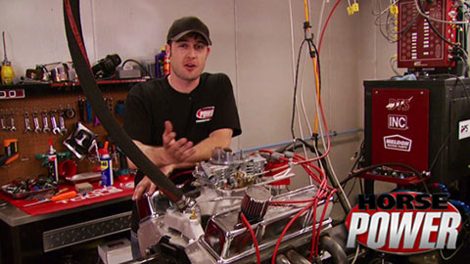HorsePower Builds
Want more content like this?
Join the PowerNation Email NewsletterParts Used In This Episode
Altronics Inc.
Digicam engine degree system.
Cherry Bomb
Cherry Bomb bolt-on header glasspack muffler.
Hedman Hedders
1.625 primary tube Headers, 1.75 primary tube Headers.
Holley
600 CFM Universal polished manual choke, Vacuum Secondary, Street Performance Carburetor, Fuel bowl conversion, Fuel supply lines, replacement gaskets, secondary metering body.
Holley
770 Street Avenger carb.
Trans-Dapt
Open plenum aluminum spacer, four hole tapered spacer.





























